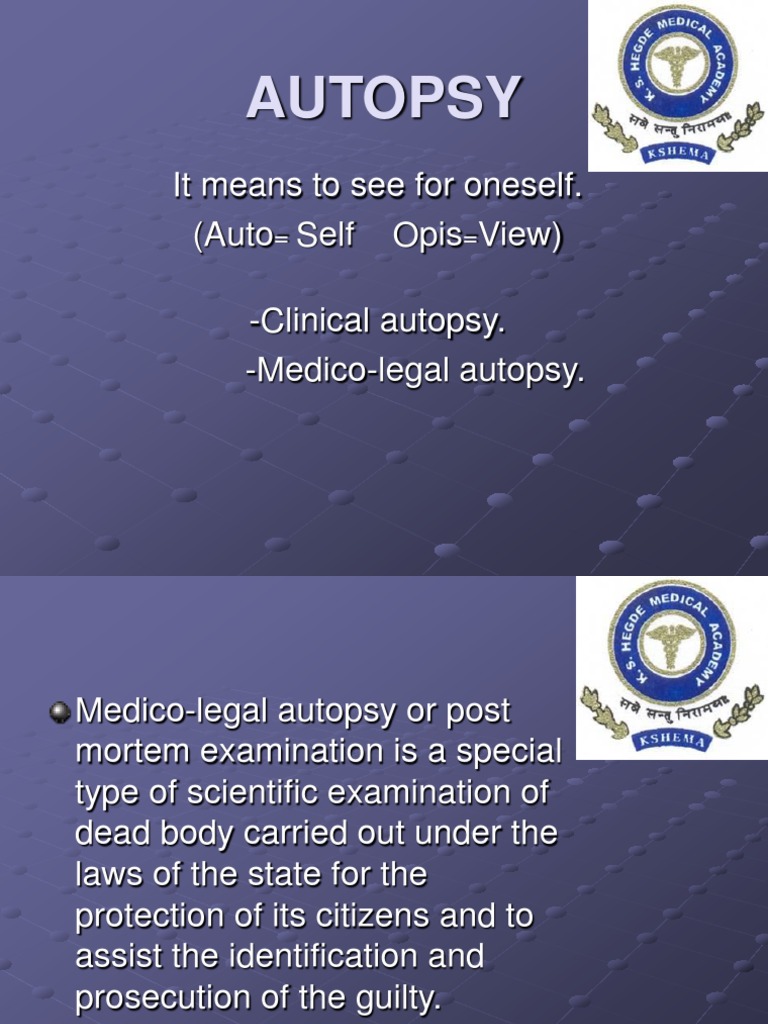Ever wondered what secrets lie beneath the surface, beyond what the naked eye can perceive? What if unraveling those mysteries could provide solace to the bereaved, advance medical science, and even bring justice to light? The answer, often concealed within the hallowed halls of pathology, is the autopsy.
An autopsy, also known as a post-mortem examination or necropsy, is a meticulous surgical procedure performed on a deceased person to determine the cause of death, the manner of death, and the presence of any disease or injury. It is a powerful tool, offering invaluable insights into the final chapter of a life story. But how comprehensive is this process, really? And what precisely does it entail?
The Etymological Roots: A Glimpse Into the Past
The word “autopsy” originates from the Greek words “autos” (self) and “opsis” (view), literally meaning “to see for oneself.” This etymology beautifully encapsulates the core purpose of the procedure: a direct, firsthand investigation to ascertain the truth. This ‘self-view’ allows pathologists to explore the intricacies of the human body, offering insights unavailable during life.
Indications and Legal Framework: When is an Autopsy Performed?
Autopsies are not performed in every instance of death. Several circumstances warrant their execution, often dictated by legal or medical necessities.
- Unexplained Deaths: When the cause of death is unknown or suspicious, an autopsy is crucial. This is particularly relevant in cases of sudden, unexpected deaths, especially in young or apparently healthy individuals.
- Suspicious Deaths: In cases involving potential foul play, such as homicides or suspected poisoning, an autopsy is indispensable for gathering forensic evidence.
- Deaths in Custody: Deaths occurring while an individual is in police custody or incarcerated routinely necessitate an autopsy to ensure transparency and accountability.
- Workplace Accidents: Fatal accidents at work often trigger an autopsy to determine the contributing factors and prevent future occurrences.
- Medical Research: Autopsies can be performed for research purposes, providing valuable data for understanding diseases and developing new treatments. These are typically conducted with the consent of the deceased’s family.
- Public Health Concerns: In instances of outbreaks of infectious diseases, autopsies can help identify the pathogen and track its spread, vital for implementing effective public health measures.
- Request by Family: While not legally mandated, families may request an autopsy to gain closure, understand potential genetic risks, or confirm a suspected diagnosis.
The legality surrounding autopsies varies depending on jurisdiction. Most regions require consent from the next of kin, unless the autopsy is legally mandated due to suspicious circumstances or public health concerns. The legal framework ensures respect for the deceased and their family while upholding the pursuit of justice and scientific advancement.
The Autopsy Procedure: A Step-by-Step Journey
The autopsy procedure is a systematic and meticulous process, conducted by a qualified pathologist. It generally involves the following stages:
- External Examination: The pathologist meticulously examines the body’s exterior, noting any injuries, marks, or abnormalities. This includes documenting scars, tattoos, bruises, and any signs of trauma. Detailed photographs are often taken.
- Internal Examination: This involves making incisions to access the internal organs. The specific incisions vary depending on the circumstances and the pathologist’s preference, but typically include a Y-shaped incision across the chest and abdomen.
- Organ Removal and Examination: Each organ is carefully removed, weighed, measured, and examined for any abnormalities. Tissue samples are often taken for microscopic examination (histopathology) and toxicological analysis.
- Microscopic Examination (Histopathology): Tissue samples are processed, stained, and examined under a microscope to identify cellular changes indicative of disease or injury. This is a crucial step in diagnosing many conditions.
- Toxicological Analysis: Samples of blood, urine, and other tissues are analyzed to detect the presence of drugs, alcohol, or other toxins that may have contributed to the death.
- Documentation and Reporting: Throughout the entire process, the pathologist meticulously documents all findings, including photographs, diagrams, and written descriptions. A detailed autopsy report is then prepared, summarizing the findings and providing the pathologist’s opinion on the cause and manner of death.
Types of Autopsies: Tailoring the Investigation
While the general principles remain the same, different types of autopsies can be performed depending on the specific circumstances:
- Complete Autopsy: This involves a thorough examination of all organs and tissues.
- Limited Autopsy: This focuses on specific organs or body regions, often performed when the cause of death is suspected to be localized to a particular area.
- Forensic Autopsy: This is performed in cases involving suspicious or criminal activity, with a focus on gathering evidence for legal proceedings.
- Clinical Autopsy: This is performed for medical research or to confirm a diagnosis, often with the consent of the family.
The Role of Ancillary Tests: Unveiling Further Clues
In addition to the physical examination, various ancillary tests can provide further information and support the pathologist’s findings. These include:
- Radiology: X-rays, CT scans, and MRI scans can be used to visualize internal structures and identify fractures, foreign objects, or other abnormalities.
- Microbiology: Cultures can be taken to identify infectious agents, such as bacteria, viruses, or fungi.
- Genetics: Genetic testing can be performed to identify inherited conditions that may have contributed to the death.
Benefits of Autopsies: A Legacy of Knowledge
The benefits of autopsies extend far beyond determining the cause of death. They play a crucial role in:
- Advancing Medical Knowledge: Autopsies provide invaluable data for understanding diseases and developing new treatments.
- Improving Public Health: By identifying outbreaks of infectious diseases, autopsies help protect the public from harm.
- Ensuring Quality of Medical Care: Autopsies can identify medical errors and help improve the quality of care provided to patients.
- Providing Closure to Families: Autopsies can provide answers to grieving families, helping them understand the circumstances surrounding their loved one’s death.
- Contributing to Legal Justice: In cases of suspicious death, autopsies can provide crucial evidence for legal proceedings.
The Future of Autopsies: Embracing Innovation
The field of autopsy is constantly evolving, with new technologies and techniques being developed to improve accuracy and efficiency. Minimally invasive autopsy techniques, such as virtual autopsies using advanced imaging, are gaining traction. These techniques offer a less invasive alternative to traditional autopsies, while still providing valuable information.
In conclusion, the autopsy, far from being a morbid exercise, is a powerful and essential tool for understanding death, advancing medical knowledge, and ensuring justice. It is a testament to our enduring quest to uncover the truth, even in the face of mortality. While it may seem daunting, it is a process steeped in scientific rigor and guided by a profound respect for the deceased and their legacy.










Leave a Comment